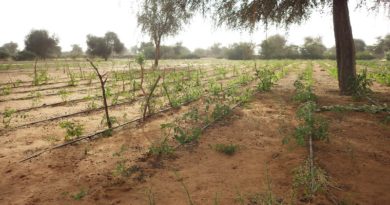How sustainable tourism can make world cleaner, greener
Whether it is a chic, zero-emission hotel in Milan where toiletries are 99 per cent biodegradable, or Gaansbai in South Africa, where conservation of native flora and fauna is a community-wide priority, sustainable tourism is growing fast across the globe.
It is a tribute to the myriad entrepreneurs, companies, creative individuals and communities that the United Nations is marking 2017 as the International Year of Sustainable Tourism for Development.
This means that, throughout 2017, activities and initiatives across the spectrum of those involved in tourism will celebrate its transformational power on our global efforts to create a world that is cleaner and greener, more equal and more inclusive.
It is a celebration for each and every one of us: those who work and have interest in the sector and its sustainability, and also those consumers who travel to discover, to experience, and to give something back in return.
Research shows that a rising number of travellers want to tread lightly. The modern tourist wants to give back to the countries and communities they visit and reduce their impact on the environment. The campaign ‘Travel.Enjoy.Respect’ that is linked to the International Year aims at precisely underlining the role of the traveller in amplifying the potential of tourism while avoiding damage on the environment, traditions, culture, heritage and local communities.
But what are the options for the would-be green traveller? How much of an impact can one person have?
The answer is a lot.
This is because global tourism is really big business. According to the World Tourism Organization (UNWTO), tourist spending swelled from only $2 billion in 1950 to $1.2 trillion in 2015. The number of international tourists has grown by orders of magnitude as well, from 25 million travelled in 1950 to 1.2 billion in 2015.
Domestic tourism is even bigger. It is estimated that between five and six billion people take holidays at home. In one way or another we are almost all tourists.
This is good news. Countless jobs have been created in the process, many for the poor.
It also means the potential in tourism going green is massive. But sustainable tourism still only represents a small fraction of the global industry.
Tourism generates an estimated five per cent of global greenhouse gas emissions. According to UN Environment, that proportion is higher –12.5 per cent–if factors such as energy use at hotels and transporting food and toiletries are included.
Other sobering figures include water use. A tourist in Europe will consume more water on holiday than at home. Those staying at luxury hotels use nearly three times as much as a result of the water used for swimming pools and golf courses.
Then there is waste generation at resorts or from cruise ships; overfishing on coral reefs to feed visitors; loss of animal and plant species linked with the construction and operation of resorts; and impacts on the culture of local people.
Industry growth shows no sign of slowing. By 2020 it is estimated that the number of global tourists will reach 1.6 billion. To reach the targets set by the Paris Agreement on climate change and the Sustainable Development Goals, we need a sea change in tourism.
This year, you, the consumer, can make a difference.
Whether you’re fleeing winter for a tropical beach or uncovering secrets in your own backyard, you can reduce your impact.
Getting started can be tricky. There can be hundreds of different sustainable tourism standards to choose from. The Global Sustainable Tourism Council has a reliable guide, and maintains recent sustainability criteria for hotels, destinations and tour operators.
Next, buy the guidebooks that give you the information you need on green options in the country, city, community and hotel you plan to visit. If guidebooks are encouraged to list more environmentally friendly options, you benefit from choice and green destinations benefit from exposure.
Then, find out more about where you choose to go. Ask questions of tour operators and destinations about how they manage water and waste. Do they source fruit, vegetables and meat locally and have clear and positive local employment policies? Are they drawing electricity from renewables? Decide where you spend your money based on these factors.
Flying to and from destinations is more problematic. While aircraft are becoming more efficient, air travel is still one of the most damaging modes of transportation to the climate per kilometre travelled.
Buying carbon offsets, which many airlines offer during the ticket purchase process, is the best way to reduce your impact if you have to fly. The UN Climate Convention’s Climate Neutral Now provides advice and helps ensure that offsetting generates real and positive benefits.
At your destination, you can support local artisans and manufacturers instead of buying mass-produced souvenirs. You can eat local. When you visit natural sights, you can ensure you leave no trace.
The International Year of Sustainable Tourism for Development asks you to consider the impact of your travel on sustainable economies, societies, environments and cultures, along with peace.
‘Travel.Enjoy.Respect Campaign’ outlines how you can carry out some of these actions while inviting you to share your own inspiring sustainable travel tales.
Such stories allow you to gain a personal insight into how real lives of people and communities around the globe have been shaped by sustainable tourism.
They are reminders that tourism is a power for good. It breaks down walls, brings cultures closer together and reminds us that we all share one incredible, beautiful planet.
You can use your holiday to make more than memories. With sustainable choices, you can help make our world cleaner and greener. And you can be a global ambassador for respect – respect for our planet, our culture and the communities that welcome us with open hearts.




